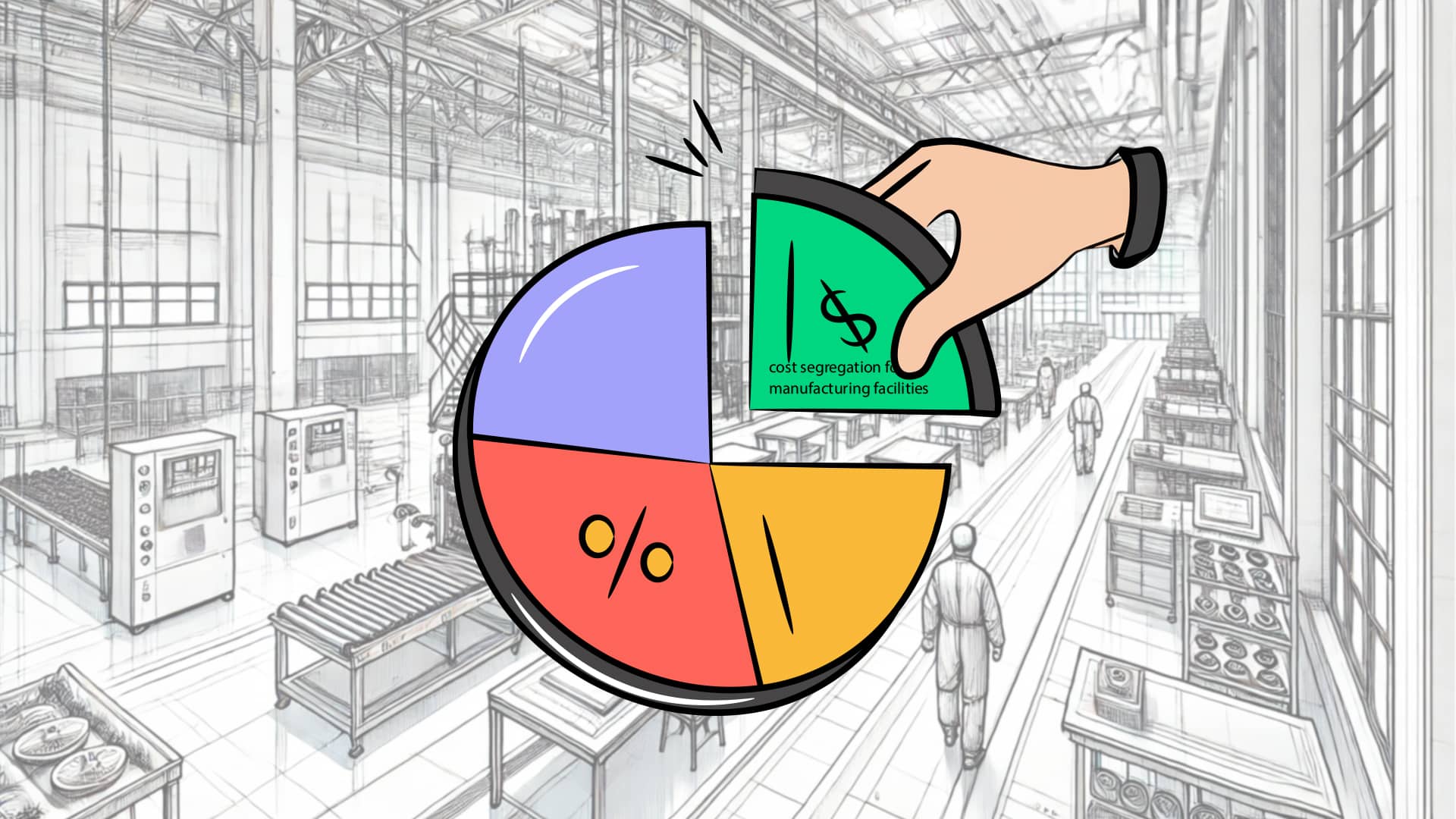Manufacturers are always on the lookout for ways to enhance their profit margins and improve tax efficiency. One powerful but often overlooked strategy is cost segregation. This process allows manufacturers to reclassify certain building components for accelerated depreciation, resulting in significant tax savings and improved cash flow. Let's explore how cost segregation can boost your manufacturing margins and enhance your bottom line.

Understanding Cost Segregation
Cost segregation is a tax strategy that involves identifying and reclassifying personal property assets that are embedded in a manufacturing facility. These assets can be depreciated over a shorter period than the building itself, which is typically depreciated over 39 years. By accelerating the depreciation of these assets, manufacturers can reduce their taxable income and increase their tax efficiency.
The Impact on Manufacturing
For manufacturers, cost segregation can be a game-changer. By accelerating depreciation on certain assets, you can lower your taxable income and consequently your tax liability. This immediate tax relief can be reinvested into your business, used to upgrade equipment, expand operations, or simply improve cash flow.
Consider a business owner who runs a mid-sized manufacturing plant. After undertaking a cost segregation study, it was discovered that many components of the facility, such as specialized electrical systems, HVAC units, and flooring, could be reclassified for shorter depreciation periods. By doing so, the business owner was able to significantly reduce their tax liability for the year, freeing up capital to invest in new machinery. This not only improved production capacity but also boosted profit margins.
Incorporating Class Lives for Manufacturing Assets
Manufacturing assets can have varying class lives depending on the specific goods they manufacture. According to IRS guidelines, these assets are typically categorized under different class lives:
- 5-Year Class Life: Includes assets like computers and peripheral equipment, certain vehicles, and data handling equipment.
- 7-Year Class Life: Covers office furniture and fixtures, certain manufacturing equipment, and other similar assets.
- 10-Year Class Life: Applies to certain specialized manufacturing equipment and other longer-lived assets.
- 15-Year and 20-Year Class Lives: Include certain land improvements and infrastructure assets.
Refer to the IRS Appendix B Pg.97, Tables B-1 and B-2, for detailed classifications and recovery periods specific to various manufacturing activities.
Key Benefits of Cost Segregation for Manufacturers
- Increased Cash Flow: By reducing current tax liabilities, manufacturers can retain more cash. This is crucial for maintaining operations, especially in times of economic uncertainty.
- Improved Tax Efficiency: Accelerated depreciation leads to immediate tax savings. This efficient use of tax strategies can enhance overall financial performance.
- Enhanced Cost Allocation: Identifying and reclassifying assets allows for more accurate cost allocation. This can improve financial reporting and provide better insights into the cost structure of the manufacturing process.
- Maximized Industrial Tax Benefits: By leveraging cost segregation, manufacturers can take full advantage of available industrial tax benefits. This can result in substantial long-term savings.
Implementing Cost Segregation
To implement a cost segregation study, manufacturers should engage with a specialized firm that understands the intricacies of tax law and building components. These firms typically employ engineers and tax professionals who can meticulously analyze your facility and identify assets eligible for accelerated depreciation.
The process involves a thorough review of construction documents, site inspections, and cost analysis. The result is a detailed report that reclassifies assets into shorter-lived property categories. This report can then be used to amend tax returns and claim additional depreciation deductions.
Example: A Business Owner's Success Story
Let's revisit the earlier example. After completing the cost segregation study, the business owner discovered that nearly 30% of the facility's cost could be reclassified. This resulted in a significant tax deduction, translating to thousands of dollars in tax savings. The business owner used these savings to purchase a new production line, which increased manufacturing output by 15%. The improved efficiency and increased capacity not only boosted profit margins but also positioned the company for future growth.
Conclusion
Manufacturing tax strategies like cost segregation can significantly boost profit margins and enhance tax efficiency. By reclassifying certain building components for accelerated depreciation, manufacturers can achieve immediate tax savings and improve cash flow. Whether you own a small workshop or a large industrial facility, cost segregation can be a valuable tool in your financial strategy.
If you're interested in exploring how cost segregation can benefit your manufacturing business, consider consulting with us at Engineered Tax Services. With our approach, you can unlock significant tax benefits and drive your business towards greater profitability.
By focusing on strategic tax planning and efficient cost allocation, manufacturers are discovering new ways to boost profits and achieve long-term success. Don't miss out on the opportunity to enhance your margins and improve your financial health through cost segregation.



